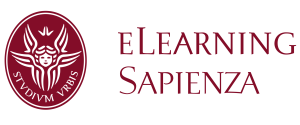Here is a detailed description in WORD of the 3 components of the final exam
1. Data base Searches
2. Reading a clinical paper and note taking
3. EBM project presentation
Read the description carefully to prepare for the exam.
DESCRIPTION OF THE FINAL EXAM
THE FINAL EXAM CONSISTS OF 3 COMPONENTS
Formulating clinical questions
2. An EBM presentation about a patient problem .
3. A clinical paper reading test
Below is a description of each part:
PART 1: SEARCH STRATEGIES
To demonstrate competency in searching for evidence(a) the use of primary
medical databases
(b) the construction of effective search strategies to retrieve high quality clinical evidence. Your EBM slide presentation will be the best demonstration of your knowledge but there i salso a short written component.
Time: 20 min
|
You need to:
|
Si |
No |
|
1. Read a short clinical description and interpret the key problem and concepts
|
|
|
|
2. Create a semantic map of key words useful for searching medical databases. by completing a PICO table |
|
|
|
3. Write a structured clinical question using the key words identified in your PICO table |
|
|
|
4. Give an example of a search strategy for MEDLINE |
|
|
|
5. List at least 4 medical databases you could use to search for evidence |
|
|
PART 2: READING A CLINICAL PAPER
Students need to demonstrate effective strategies to
(a) Read a clinical research paper QUICKLY and
(b) Take notes (in English or Italian) for each of the headings in the table (see below)
Time: 30 minutes
|
Take notes on:
|
What you need to do |
Punti |
|
OBJECTIVES |
Write the study objectives as a structured clinical question using PICO (in English or Italian)
|
2 |
|
Study Design
|
What research methodology was adopted in the study? (e.g. case report, RCT etc) |
1 |
|
Participants /Setting
|
a) describe the patient population of the study (number and characteristics) b) describe the study context (hospital-based; community-based, multicentre etc)
|
1 |
|
Intervention(s)
|
What health interventions are described in the study (a drug? a surgical procedure? other?) Give accurate details (e.g drug dosages)
|
1 |
|
Main Outcome Measures
|
What measures are adopted to see if the clinical objective(s) is/are achieved? (e.g. mortality at 12 months)
|
1 |
|
Indicate METHODOLOGICAL strengths and weaknesses
|
Use your knowledge of evidence based medicine to identify possible sources of bias (weaknesses) in the study. Identify also examples of best practice in this study |
2 |
|
RelatE this study to current evidence: |
What does this study add to what is known already in the medical community? The introduction of a paper describes this)
|
1 |
|
What is your decision regarding your patient? |
Referring to the clinical scenario described in the search skill section of the exam, what is your judgement as the doctor managing the case?
|
1 |
|
Total Marks |
|
10/30 |
PART 3: EBM ORAL PRESENTATION
Students need to demonstrate:
(a) the ability to present a critical synthesis of clinical evidence
(b) to communicate effectively using presentation software
(c) to demonstrate professional knowledge managment skills (citations, references, use of bibliographic management software)
Time: 10 minutes oral presentation + 2 minutes questions:
|
EBM Assessment Criteria
|
Yes |
No |
|||||||||
|
Structure of EBM Presentation: Use this guide to structure your slide presentation
|
|
|
|||||||||
|
1. Opening slide contains engaging patient centred title, presenter name and institutional affiliation: (1 slide)
|
|
|
|||||||||
|
2. Presents deteailed patient case clearly with background clinical and social detail. (1-2 slides: title Patient Presentaion; It is an advantage for students to use patient cases they have met in the hospital)
|
|
|
|||||||||
|
3. Provides appropriate clinical background to patient’s pathology (1-2 slides: Title: Clinical Background) |
|
|
|||||||||
|
4. Identifies a clinical problem and writes a clear well structured clinical query as a starting point for searching for evidence (e.g. using PICO) (1 slide: Title – Clinical Query or Clinical Question)
|
|
|
|||||||||
|
5. Identifies key words, concepts and relevant terminology in English to create a semantic map (1 slide: Title: Key Search Terms or Key Trerminology)
|
|
|
|||||||||
|
6. Describes a systematic search strategy demonstrating knowledge of different medical databases with some examples (1-2 slides: Title: Search Strategies)
|
|
|
|||||||||
|
7. Describes filters and inclusion/exclusion criteria for usng evidence, and indicates number of studies included and study designs. (1 slide: Title: Selection Criteria)
|
|
|
|||||||||
|
8. Evaluates evidence explaining factors which influence the accuracy or validity of information (e.g. how up to date it is; possible bias, compare and contrast, methodological factors (e.g. study desigsn and the strength or weakness of the evidence you present) Consider using a table like this to present your evidence schematically, writing author names for the outcomes they described. (1-2 Slides: Title: Evaluation of Evidence)
|
|
|
|||||||||
|
9. Balances primary and high quality secondary evidence. Evidence must include most recent up to date papers
|
|
|
|||||||||
|
10. Relates synthesis of evidence to own patient and explains unresolved issues and/or future directions for research (1-2 slides: Title: ‘Clinical Messag’e, and or ‘Conclusion’) |
|
|
|||||||||
|
11. Bibliography is formatted using a bibliographic software (e.g. Mendeley, Zotero, Papers,) and is of a professional standard for medical publication (1-2 slides: Title: References
|
|
|
|||||||||
|
Quality of Presentation |
|
|
|||||||||
|
12. All medical definitions/descriptions and images are referenced professionally on slides using bibliographic software (e.g. Mendeley, Zotero, Papers, Endnote). Each student must present a minimum of 10 full text papers. Bring these on a pen drive during to the exam. You can include a maximum of 3 secondary reviews. (15+ papers for groups of 2 students) Evidence must be up to date
|
|
|
|||||||||
|
13. Patient confidentiality is maintained and data anonymised. The best presentations will be based on patients you have met and worked with in the hospital during your studies. Permission to use case must be requested form the clinicians responsible (see point 14)
|
|
|
|||||||||
|
14. Appropriate acknowledgement is made of all public Hospital data reported (patient records, imaging, laboratory tests etc) and clinicians who have aided you in your work: e.g. Courtesy of Dr. Rossi Azienda Policlinico Umberto I, Rome Italy
|
|
|
|||||||||
|
15. Communicates effectively (engages audience, uses multimedia support, clear structure & signposting and keeps to timing
|
|
|
|||||||||
|
TOTAL MARKS |
15/30 |
|

